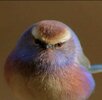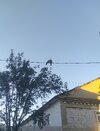Sergeant Stubby was a stray dog whose heroic service during
World War I (1914–18) saved lives and even led to the capture of a German spy. He was the unofficial mascot for the 102nd Infantry, 26th “Yankee” Division, and is the first dog to be promoted to the rank of sergeant in the
U.S. Army.
When the 102nd Infantry was training for battle on the grounds of
Yale Universityin 1917, a stray dog made friends with members of the company. Pvt. J. Robert Conroy developed a bond with the dog, and he and other soldiers named the dog “Stubby.” Stubby’s breed was unknown, but he had a distinctive tiger-striped coat.
The dog became the unofficial mascot of the 102nd Infantry at Yale, though dogs were not allowed in the camp, a rule that was overlooked because Stubby was good for
morale. He even learned to salute by raising his right paw toward his face. When the soldiers shipped out for
Franceto fight in World War I, Conroy smuggled the dog aboard the ship, and Stubby soon befriended the other troops.
Serving on the front lines
Stubby’s saluting trick came in handy when he arrived in France along with Conroy and the other infantry members. Stubby saluted Conroy’s commanding officer, winning a place in his heart and, as it would turn out, a trip to the front lines as the 102nd’s mascot.
Stubby soon moved beyond his role as mascot to become an important
asset to the troops in battle. He survived being wounded from exposure to
mustard gas, recovering in a field hospital. After that exposure, Stubby was able to detect even small amounts of poisonous gas. When his division was under a gas attack, Stubby immediately recognized the smell and ran through the trenches, barking to alert everyone, and saving many soldiers from serious harm.
Stubby’s battlefield skills extended beyond gas detection. During the 17 battles he was involved in during his 18 months of service, he also located wounded men lying in fields between the trenches. His barks alerted searchers who then brought the wounded to safety.
Stubby, the spy detector
His most heroic feat occurred when he caught a German spy who was mapping out Allied trench locations. Stubby was on his usual guard duty and recognized that the German did not belong in the camp; he ran after the spy, biting his legs as he tried to escape, thereby allowing Stubby’s human comrades to capture him. For his heroic efforts, Stubby was promoted to the rank of sergeant, the first dog to be promoted to the position.
In April 1918 Stubby’s unit was under attack during a battle near the German-occupied town of Seicheprey, France. Stubby was
wounded in his chest and leg by shrapnel. During his treatment at a
Red Cross hospital, he doubled as a therapy dog, visiting recovering soldiers to lift their spirits. He later returned to the battlefield and was involved in the Allies’ liberation of the French town Chateau-Thierry. The women of the town made Stubby a blanket and medals to thank him for his bravery.
Postwar life
After the war Stubby became a celebrity, leading U.S. troops in a parade and meeting with U.S. Presidents
Woodrow Wilson,
Warren G. Harding, and
Calvin Coolidge. He was awarded many medals for his heroism, including a medal from the
Humane Society that was presented to him by Gen.
John Pershing.

 www.facebook.com
www.facebook.com

 www.facebook.com
www.facebook.com










